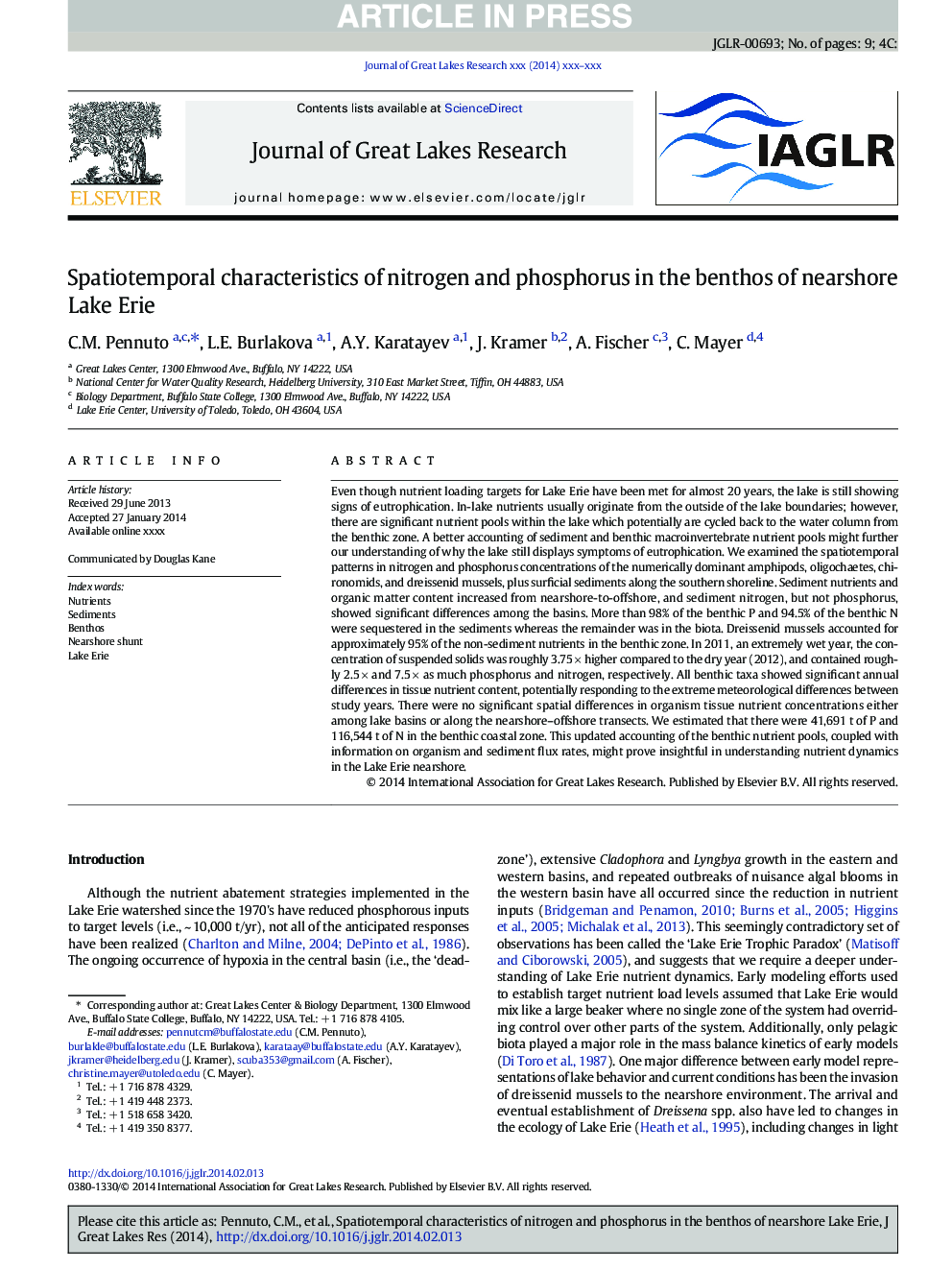| Article ID | Journal | Published Year | Pages | File Type |
|---|---|---|---|---|
| 6305268 | Journal of Great Lakes Research | 2014 | 9 Pages |
Abstract
Even though nutrient loading targets for Lake Erie have been met for almost 20Â years, the lake is still showing signs of eutrophication. In-lake nutrients usually originate from the outside of the lake boundaries; however, there are significant nutrient pools within the lake which potentially are cycled back to the water column from the benthic zone. A better accounting of sediment and benthic macroinvertebrate nutrient pools might further our understanding of why the lake still displays symptoms of eutrophication. We examined the spatiotemporal patterns in nitrogen and phosphorus concentrations of the numerically dominant amphipods, oligochaetes, chironomids, and dreissenid mussels, plus surficial sediments along the southern shoreline. Sediment nutrients and organic matter content increased from nearshore-to-offshore, and sediment nitrogen, but not phosphorus, showed significant differences among the basins. More than 98% of the benthic P and 94.5% of the benthic N were sequestered in the sediments whereas the remainder was in the biota. Dreissenid mussels accounted for approximately 95% of the non-sediment nutrients in the benthic zone. In 2011, an extremely wet year, the concentration of suspended solids was roughly 3.75Â Ã higher compared to the dry year (2012), and contained roughly 2.5Â Ã and 7.5Â Ã as much phosphorus and nitrogen, respectively. All benthic taxa showed significant annual differences in tissue nutrient content, potentially responding to the extreme meteorological differences between study years. There were no significant spatial differences in organism tissue nutrient concentrations either among lake basins or along the nearshore-offshore transects. We estimated that there were 41,691Â t of P and 116,544Â t of N in the benthic coastal zone. This updated accounting of the benthic nutrient pools, coupled with information on organism and sediment flux rates, might prove insightful in understanding nutrient dynamics in the Lake Erie nearshore.
Related Topics
Physical Sciences and Engineering
Earth and Planetary Sciences
Earth and Planetary Sciences (General)
Authors
C.M. Pennuto, L.E. Burlakova, A.Y. Karatayev, J. Kramer, A. Fischer, C. Mayer,
